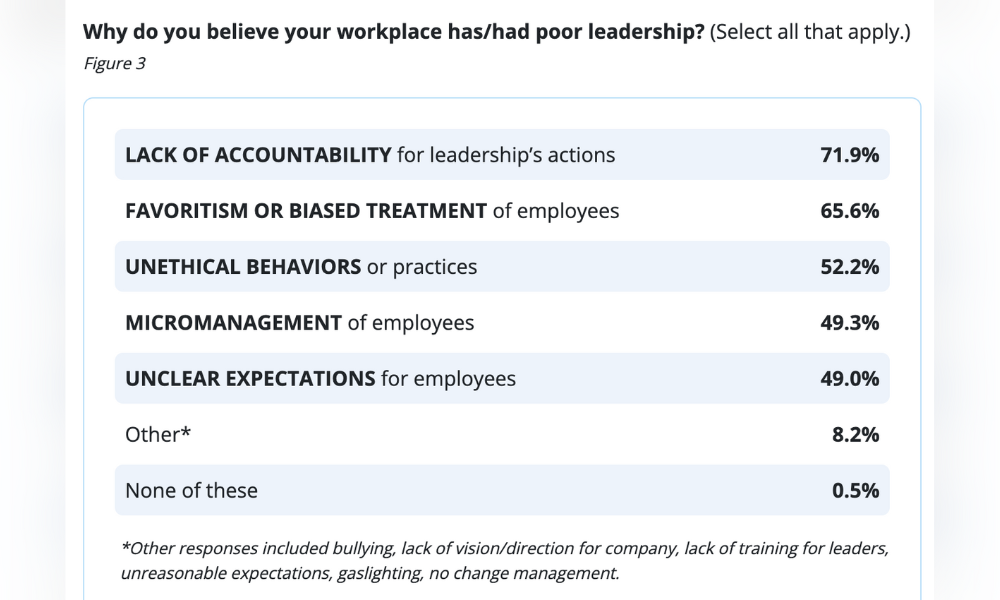
How can HR leaders address toxic behaviours, especially from leadership?

Nearly half of employees in the United States don't trust their HR leaders to address toxic behaviour in the workplace, according to a new report.
Findings from iHire showed that 45.9% of employees said ‘no’ when asked if they trust HR to address toxic behaviours within their current or most recent workplace.
Only 25% of the respondents said they trust their HR when it comes to addressing toxic behaviour.
"It's concerning that nearly half of workers don't trust HR to address negative or toxic behaviours," said Chrisanne Bowden, Principal HR Business Partner, iHire, in a statement.
The lack of trust in HR comes in the wake of the department's failure to resolve or address toxic behaviour that was reported to them, according to the report.
Some of the most prevalent incidents of toxic behaviour at work are:
Favoritism or bias toward select employees (51.8%)
Gossip (50.0%)
Dishonesty (39.4%)
Bullying or harassment (31.4%)
Discrimination, such as ageism, sexism, or racism (26.4%)
Unethical or illegal activities (25.9%)
More than half (53%) of the respondents who witnessed or experienced this behaviour at work said they reported it to their manager, supervisor, or HR.
However, 65.2% of them said their organisation did not do anything to resolve or address the issues.
The report further found that poor leadership or management is the top reason for a toxic workplace, with 78.7% of the respondents citing it.
Among those who cited this attribute, 71.9% said poor leadership stems from the lack of accountability, while 65.6% said it is because of favouritism or biased treatment of employees.

Bowden said addressing toxic behaviour at work will require a coordination among HR teams, managers, and other leaders.
"To ensure a positive work environment where all employees can thrive, employers need to work with their HR teams, managers, and other leaders to enable a culture of trust, transparency, and communication with well-defined processes for mitigating conflict," Bowden said.
Toxic behaviour in workplaces can threaten the smooth operations and high productivity levels of an entire team, according to Indeed.
In a recent column, Indeed outlined the following steps on how leaders can manage toxic employees:
Don't take their behaviour personally in order to look at the situation more objectively
Try identifying the cause of the problem
Document toxic behaviour
Give them honest and direct feedback
Explain the consequences of their actions
Start assigning them tasks that they can complete independently
Try deciding on a compromise
Alec Gardner, HR expert, also stressed that HR leaders have a crucial role in addressing and resolving toxic issues stemming from top management.
"HR professionals act as mediators and agents of change, creating a conducive environment where employees can thrive," he said on LinkedIn.
Gardner outlined some of the proactive steps that HR can take to address and cure a toxic culture originating from top management. They include:
Establishing open communication channels to encourage reporting of toxic behaviour
Designing training programmes to educate senior leaders and employees on the importance of positive work culture
Reviewing existing policies to ensure they align with fostering a healthy work environment
Acting as impartial mediators when conflicts arise between senior leaders and affected employees
Providing leadership development programmes that can help foster a culture of respect and accountability at work
"By employing proactive strategies and creating a supportive environment, HR professionals can contribute to transforming a toxic culture into a healthy and thriving work environment," he said.